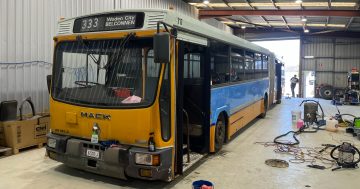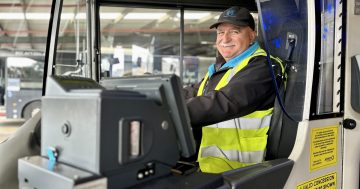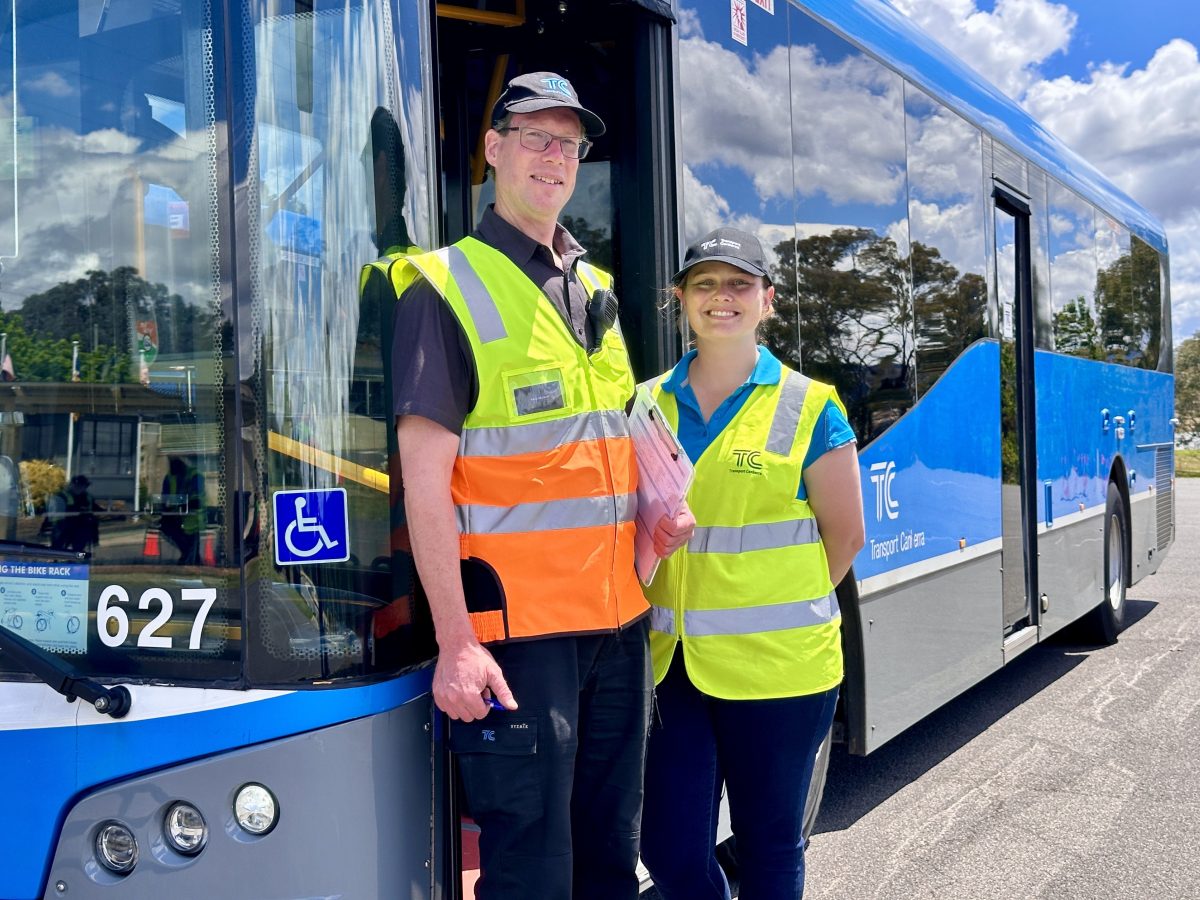
Transport Canberra bus driver trainer Paul Coleman and head of training Heidi Stephenson. Photo: James Coleman.
Transport Canberra has been screaming out for more drivers for as long as I’ve been alive.
It’s hard to see why. On the surface, it looks like a pretty awesome job.
You get to sit down on the job with your favourite radio station or podcast going, and you’re in command of 10 tonnes of machinery. There are even hissing and roaring noises. And to mix things up occasionally, you’ll come across a challenging corner.
And, in the words of head of training Heidi Stephenson, “You’re out in the community, and get to see Canberra”.
We should probably also mention the base salary of $41.72 an hour.
To entice new drivers into the big seat, Transport Canberra holds ‘Come and Try Days’ at the Sutton Road Training Centre near Queanbeyan to give prospective drivers the chance to cut their teeth and see if all this is truly for them.
Purely in the interests of journalism (okay, maybe not purely), I attended the most recent event to see what it’s like. It didn’t hurt that my trainer would also happen to be my uncle, Paul Coleman.
“Normally, we have about 150 people come,” head of training Heidi Stephenson says.
“The majority of people we see today have never sat in the seat of a heavy vehicle. Many have well-established careers in all sorts of different fields and they’re just looking for something a bit different.”
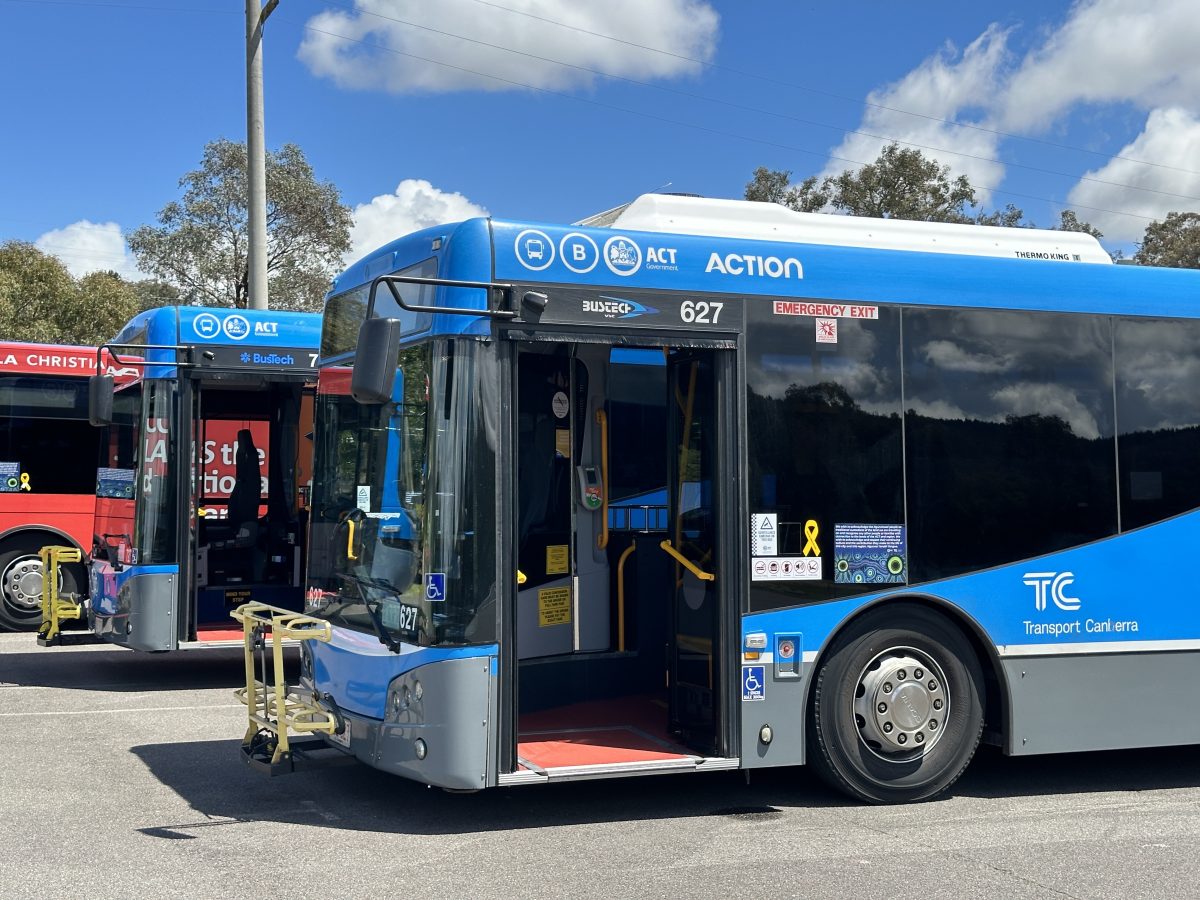
Waiting and ready. Photo: James Coleman.
The day starts when I hand over my driver’s licence to a woman in hi-viz under a gazebo and sign a waiver I should probably have read more closely than I did. Then you’re allocated your own personal trainer for the half-hour session. It’s just like a gym, really.
If you think, “I can drive a car, I can drive a bus”, there are some differences. Some rather big ones.
Unlike a car, the steering wheel on a bus is spread out before you like a large dinner plate. There’s the head of a lion on mine, indicating it’s a Scania – among the nicest of the bus brands, I’m told. The seat is suspended on what feels like a cloud and yes, I can reach all the controls and the window blinds (the first box on the trainer’s checklist ticked – some people are simply too short).
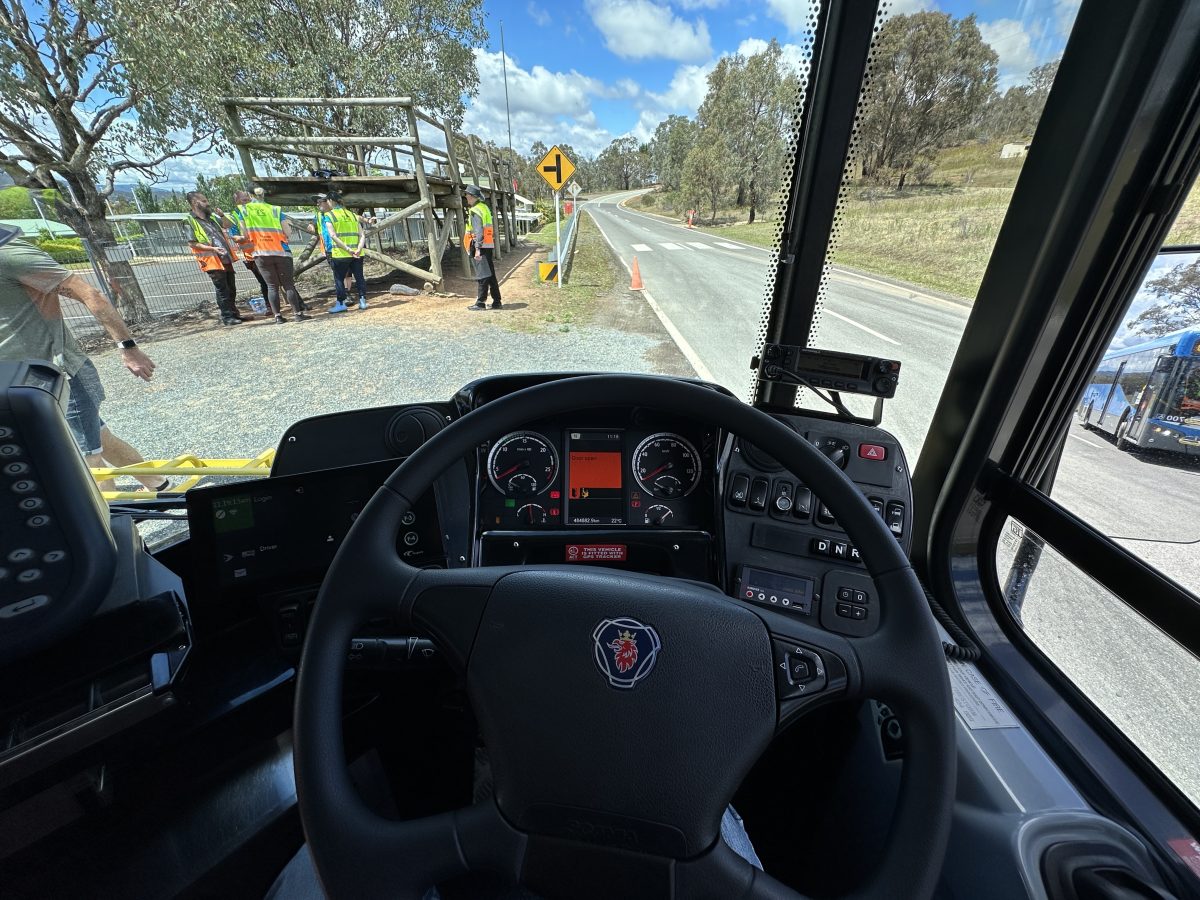
At the wheel of a Transport Canberra bus. Photo: James Coleman.
Heidi says the comments coming from all the newbies are the same.
“Because you’re sitting ahead of the front wheels, the turn is quite unusual. And the sheer length, of course – you have to consider that.”
The training centre includes a 2.5-km two-lane tarmac circuit dressed like a standard road (but with fewer potholes and cyclists). The first turn is a sweeping uphill right-hander and I’m instructed to almost head into the dirt before turning to make sure the end of the bus clears the centre white line. For left-handers, my body must be positioned over this centre white line to successfully make it around.
This is among the smaller buses in the TC fleet, but I’m still using all of the road on every corner. I’m told the bendy buses are easier because they … well, bend.
On the home straight, we can get up to 60 km/h. The diesel engine doesn’t exactly hurry all 10 tonnes along, but there’s enough torque for me – and certainly when the steering ‘plate’ is at an angle while the wheels themselves are tracking straight as an arrow. On the whole, it’s very disconcerting.
So are the brakes. They’re very ‘grabby’. I now sympathise with why drivers struggle to glide to a silky-smooth stop. It takes conscientious effort.
I pull up as elegantly as possible behind the other buses, where my trainer again refers to his checklist. What are they looking for? And did I pass the first hurdle to my new career/side hustle?
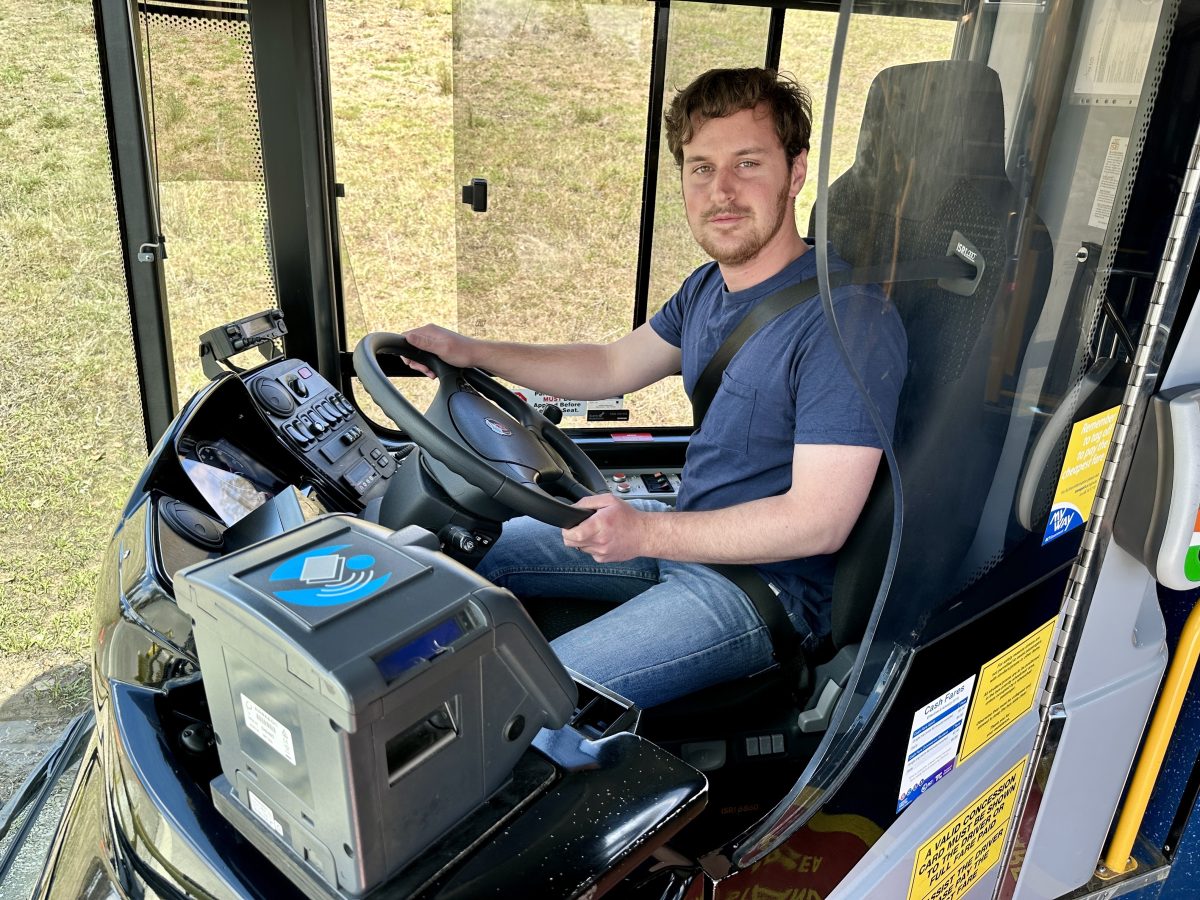
You’d get on this bus, wouldn’t you? … Wouldn’t you? Photo: Paul Coleman.
“We’re not expecting people to know what they’re doing,” Heidi says.
“We’re basically looking to see if you can take instruction. If you can listen, we can train.”
This whole experience does count towards your application, although there are many hoops to jump through before you’re an official employee, from police and medical checks to a sit-down interview and four weeks of full-time training.
But I can confirm I now come recommended by Paul Coleman. If that counts.
To apply to become a bus driver, visit the Transport Canberra website.
